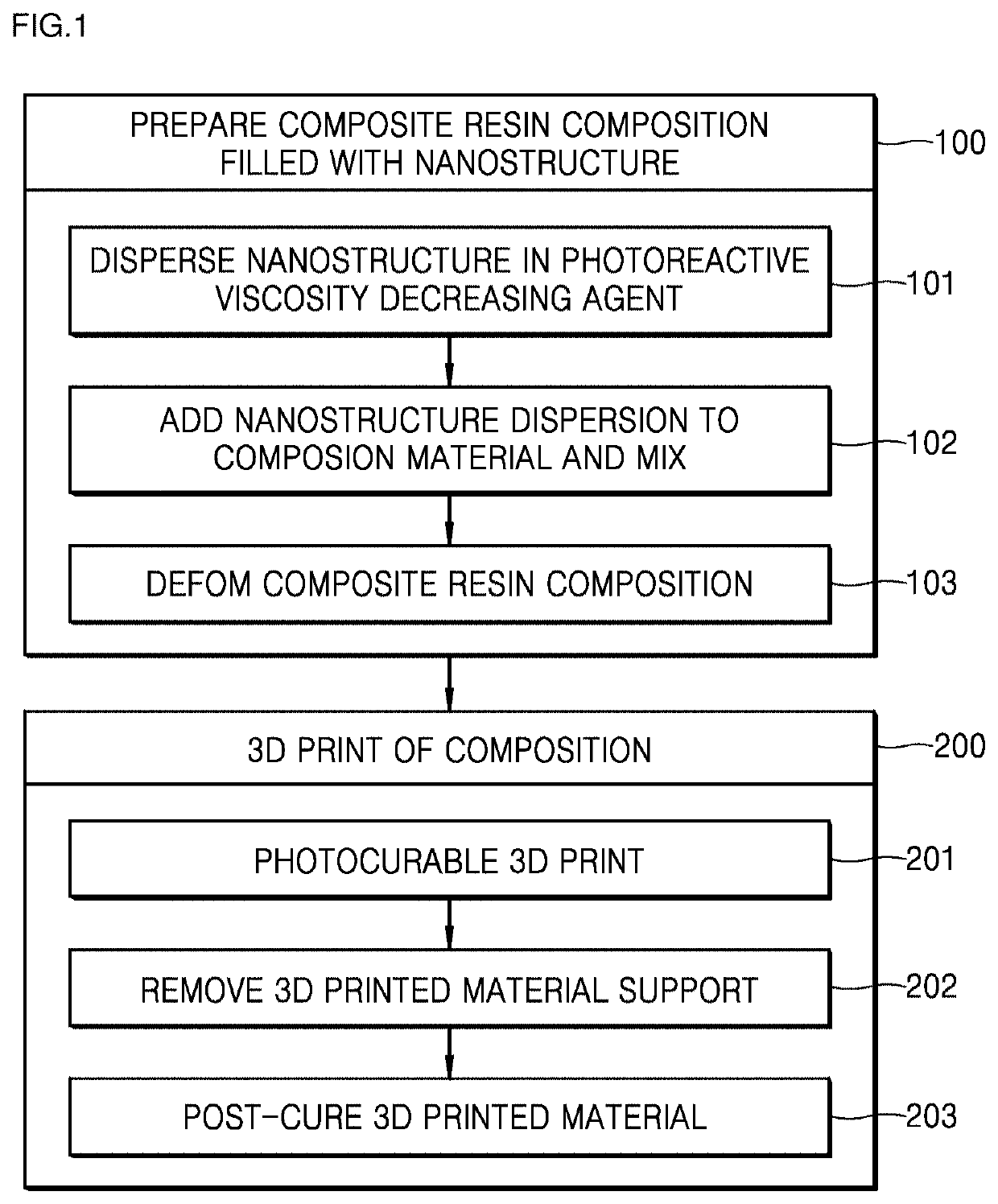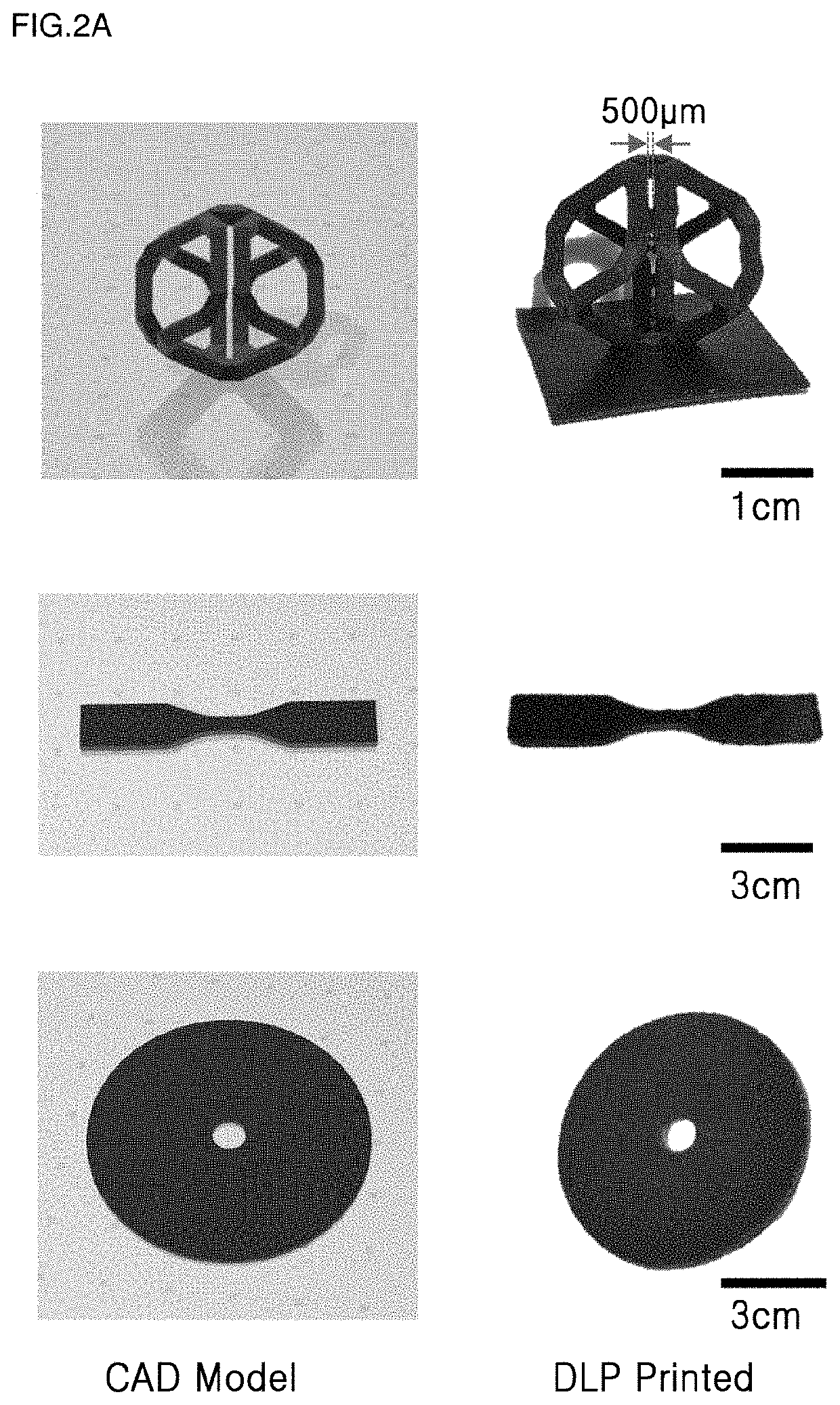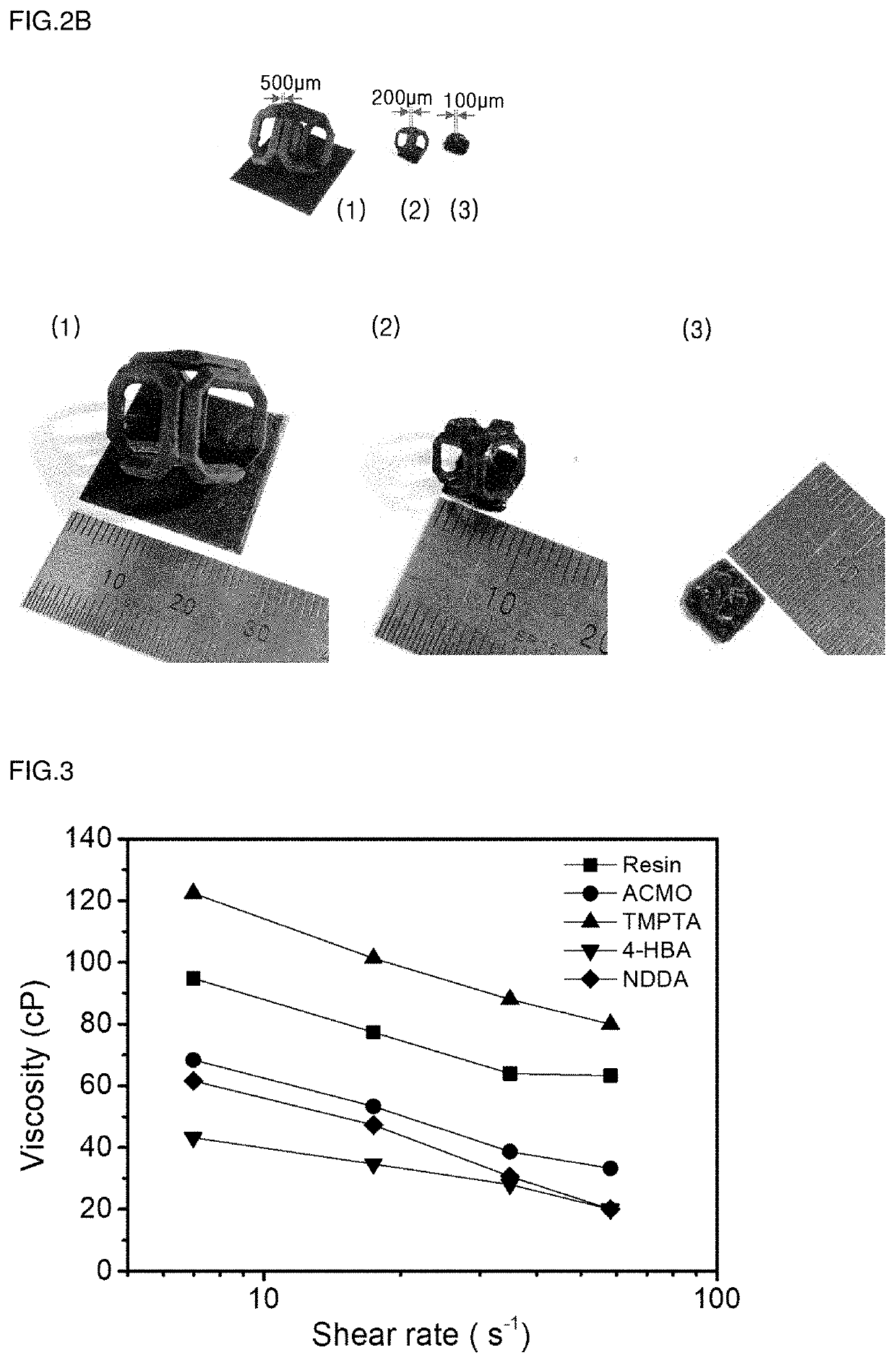Conductive composite resin composition for photocurable three-dimensional printing, preparation method thereof and photocurable three-dimensional printed material using the same
a composite resin and three-dimensional printing technology, applied in the field of conductive composite resin composition for photocurable three-dimensional printing, a preparation method thereof, and a photocurable three-dimensional printed material using the same, can solve problems such as limited printing, and achieve the effect of excellent printing quality
- Summary
- Abstract
- Description
- Claims
- Application Information
AI Technical Summary
Benefits of technology
Problems solved by technology
Method used
Image
Examples
experimental example 1
[0087]FIGS. 2A and 2B show photographs of 3D printed materials according to Preparation Example 3. FIG. 2A shows photographs of CAD models and actual 3D printed materials with various shapes, and FIG. 2B shows photographs of 3D structures with various sizes obtained by photocured 3D printing.
experimental example 2
[0088]FIG. 3 is a graph illustrating viscosity when a photoreactive viscosity decreasing agent is added to a photocurable resin according to an embodiment in a weight ratio of 1:1. Referring to FIG. 3 and Table 1, when a monomer, as a photoreactive viscosity decreasing agent, was not added to an acrylate-based photocurable resin, the viscosity was 94.8 cP at a shear rate of 7 s−1. The viscosity varied according to the type of the monomer, as the photoreactive viscosity decreasing agent, added according to the examples shown in Table 1. At a shear rate of 7 s−1, the viscosity of ACMO was 68.4 cP, the viscosity of TMPTA was 122.4 cP, and the viscosity of 4-HBA was 43.2 cP, and the viscosity of NDDA was 61.6 cP.
TABLE 1Shear rate (s−1)7173558Type of monomerViscosity (cP)Comparative—94.877.36463.3Example 1Example 1ACMO68.453.338.733.3Example 2TMPTA122.4101.38880Example 34-HBA43.234.72820Example 4NDDA61.647.330.720
experimental example 3
[0089]FIG. 4 and Table 2 show viscosity (cP), hardness (MPa), and converted modulus of elasticity (MPa) at a shear rate 58 s−1 when the content of ACMO, as the photoreactive viscosity decreasing agent, varied from 0 to 90 parts by weight relative to the photocurable resin. The hardness and the converted modulus of elasticity were values measured using a nano indenter. Nanoindentation may quantitatively measure mechanical properties such as hardness and modulus of elasticity of a material using a sharp indenter via nano-scale rod and depth control. Based on the measured data, the converted modulus of elasticity (Er) and hardness (H) were calculated. The viscosity decreases as the weight ratio of ACMO increases in the total composition. Hardness and converted modulus of elasticity decrease with the increase in the weight ratio of ACMO and increase again after the weight ratio of ACMO exceeds a predetermined level.
TABLE 2ACMOConvertedcontentViscosityHardnessmodulus of(wt %)(cP)(MPa)ela...
PUM
| Property | Measurement | Unit |
|---|---|---|
| viscosity | aaaaa | aaaaa |
| temperature | aaaaa | aaaaa |
| electrical conductivity | aaaaa | aaaaa |
Abstract
Description
Claims
Application Information
 Login to View More
Login to View More - R&D Engineer
- R&D Manager
- IP Professional
- Industry Leading Data Capabilities
- Powerful AI technology
- Patent DNA Extraction
Browse by: Latest US Patents, China's latest patents, Technical Efficacy Thesaurus, Application Domain, Technology Topic, Popular Technical Reports.
© 2024 PatSnap. All rights reserved.Legal|Privacy policy|Modern Slavery Act Transparency Statement|Sitemap|About US| Contact US: help@patsnap.com










